Expand description
§TetaNES
📖 Summary - ✨ Features - 🌆 Screenshots - 🚀 Getting Started - 🛠️ Roadmap - ⚠️ Known Issues - 💬 Contact
§Summary
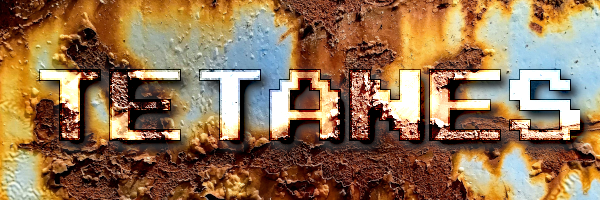
photo credit for background: Zsolt Palatinus on unsplash
TetaNES is a cross-platform emulator for the Nintendo Entertainment System
(NES) released in Japan in 1983 and North America in 1986, written in
Rust using wgpu. It runs on Linux, macOS, Windows, and in a web browser
with Web Assembly.
It started as a personal curiosity that turned into a passion project. It is still being actively developed with new features and improvements constantly being added. It is a fairly accurate emulator that can play most NES titles.
TetaNES is also meant to showcase using Rust’s performance, memory safety, and
fearless concurrency features in a large project. Features used in this project
include complex enums, traits, generics, matching, iterators, channels, and
threads.
Try it out in your browser!
§Features
- Runs on Linux, macOS, Windows, and Web.
- Standalone emulation core in
tetanes-core. - NTSC, PAL and Dendy emulation.
- Headless Mode when using
tetanes-core. - Pixellate and NTSC filters.
- CRT shader for that retro feel.
- Up to 4 players with gamepad support.
- Zapper (Light Gun) support using the mouse.
- iNES and NES 2.0 ROM header formats supported.
- Over 30 supported mappers covering >90% of licensed games.
- Game Genie Codes.
- PPU Debugger
- Runtime performance stats
- Preference snd keybonding menus using egui.
- Increase/Decrease speed & Fast Forward
- Visual & Instant Rewind
- Save & Load States
- Battery-backed RAM saves
- Screenshots
- Gameplay recording and playback
- Audio recording
§Screenshots
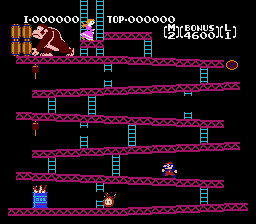
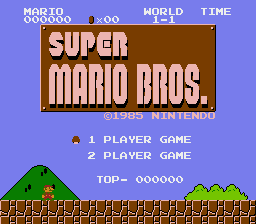
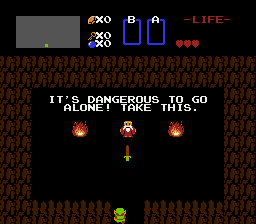
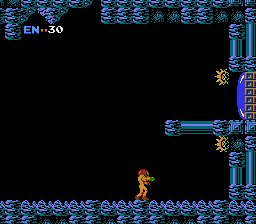
§TetaNES Core
TetaNES is split into two crates. This is the primary crate, which provides the
cross-platform emulator UI
binary. tetanes-core is the emulation
library that emulator developers can use to develop custom emulator applications
with. tetanes-core is aimed to have stronger stability guarantees, but it’s
still not 1.0 yet and there are several large features on the roadmap that may
result in breaking changes.
§Stability
Preferences and save file formats are fairly stable at this point, but since
TetaNES is not yet 1.0 and there are several large features on the roadmap
that may result in breaking changes which may result in being unable to restore
your preferences or save files.
Once some of these larger features are completed, and 1.0 is released, more
effort will be dedicatged to versioning these files for backward compatibility
in the event of future breaking changes.
§Getting Started
TetaNES runs on all major operating systems (Linux, macOS, Windows, and the
web).
§Install
There are multiple options for installation, depending on your operating system, preference and existing tooling.
§Linux
§Ubuntu/Debian
A .deb package is provided under Assets on the latest Release. Once
downloaded, you can install it and the required dependencies. e.g.
sudo apt install ./tetanes-0.10.0-1-amd64.deb§Other Distros
An AppImage is provided under Assets on the latest
Release. Simply download it and put it wherever you want.
A .tar.gz package is also provided under Assets on the latest
Release. You can place the tetanes binary anywhere in your PATH.
The following dependencies are required to be installed:
- ALSA Shared Library
- GTK3
e.g.
apt install libasound2 libgtk-3-0
dnf install alsa-lib gtk3
pacman -Sy alsa-lib gtk3
§MacOS
§App Bundle
The easiest is to download the correct app bundle for your processor. The .dmg
downloads can be found under the Assets section of the latest
Release.
§Homebrew
TetaNES can also be installed through Homebrew.
brew install lukexor/formulae/tetanes§Windows
A windows installer is provided under Assets on the latest Release. Note:
You will need the latest “Microsoft Visual C++ 2015 - 2022
Redistributable”
installed, otherwise you’ll get an error about vcruntime140.dll not being found.
§Cargo Install
You can also build and install with cargo which comes with rustup.
cargo install tetanesThis will install the latest released version of the TetaNES binary to your
cargo bin directory located at either $HOME/.cargo/bin/ on a Unix-like
platform or %USERPROFILE%\.cargo\bin on Windows.
Alternatively, if you have cargo binstall
installed:
cargo binstall tetanesThis will try to find the target binary for your platform from the latest Release or install from source, similar to above.
§Web
You can also play directly in your web browser without installing by visiting https://lukeworks.tech/tetanes-web.
§Usage
Usage: tetanes [OPTIONS] [PATH]
Arguments:
[PATH] The NES ROM to load or a directory containing `.nes` ROM files.
[default: current directory]
Options:
--rewind Enable rewinding
-s, --silent Silence audio
-f, --fullscreen Start fullscreen
-4, --four-player <FOUR_PLAYER> Set four player adapter. [default: 'disabled']
[possible values: disabled, four-score, satellite]
-z, --zapper Enable zapper gun
--no-threaded Disable multi-threaded
-m, --ram-state <RAM_STATE> Choose power-up RAM state. [default: "all-zeros"]
[possible values: all-zeros, all-ones, random]
-w, --emulate-ppu-warmup Whether to emulate PPU warmup where writes to
certain registers are ignored. Can result in
some games not working correctly
-r, --region <REGION> Choose default NES region. [default: "ntsc"]
[possible values: ntsc, pal, dendy]
-i, --save-slot <SAVE_SLOT> Save slot. [default: 1]
--no-load Don't load save state on start
--no-save Don't auto save state or save on exit
-x, --speed <SPEED> Emulation speed. [default: 1.0]
-g, --genie-code <GENIE_CODE> Add Game Genie Code(s). e.g. `AATOZE`
(Start Super Mario Bros. with 9 lives)
--config <CONFIG> Custom Config path
-c, --clean "Default Config" (skip user config and previous
save states)
-d, --debug Start with debugger open
-h, --help Print help
-V, --version Print versioniNES and NES 2.0 formatted ROMS are supported, though some advanced NES 2.0 features may not be implemented.
§Supported Mappers
Support for the following mappers is currently implemented or in development:
| # | Name | Example Games | # of Games1 | % of Games1 |
|---|---|---|---|---|
| 000 | NROM | Bomberman, Donkey Kong, Super Mario Bros. | ~247 | ~10% |
| 001 | SxROM/MMC1B/C | Metroid, Legend of Zelda, Tetris | ~680 | ~28% |
| 002 | UxROM | Castlevania, Contra, Mega Man | ~270 | ~11% |
| 003 | CNROM | Arkanoid, Paperboy, Pipe Dream | ~155 | ~6% |
| 004 | TxROM/MMC3/MMC6 | Kirby’s Adventure, Super Mario Bros. 2/3 | ~599 | ~24% |
| 005 | ExROM/MMC5 | Castlevania 3, Laser Invasion | ~24 | <0.01% |
| 007 | AxROM | Battletoads, Marble Madness | ~75 | ~3% |
| 009 | PxROM/MMC2 | Punch Out!! | 1 | <0.01% |
| 010 | FxROM/MMC4 | Fire Emblem Gaiden | 3 | <0.01% |
| 011 | Color Dreams | Crystal Mines, Metal Fighter | 15 | ~1% |
| 016 | Bandai FCG | Dragon Ball: Daimaou Fukkatsu | 14 | ~1% |
| 018 | Jaleco SS 88006 | Magic John | 15 | ~1% |
| 019 | Namco163 | Battle Fleet, Dragon Ninja | 20 | ~1% |
| 024 | VRC6a | Akumajou Densetsu | 1 | <0.01% |
| 026 | VRC6b | Madara, Esper Dream 2 | 2 | <0.01% |
| 034 | BNROM/NINA-001 | Deadly Towers, Impossible Mission II | 3 | <0.01% |
| 066 | GxROM/MxROM | Super Mario Bros. + Duck Hunt | ~17 | <0.01% |
| 069 | Sunsoft/FME-7 | Batman: Return of the Joker, Gimmick! | ~15 | <0.01% |
| 071 | Camerica/Codemasters | Firehawk, Bee 52, MiG 29 - Soviet Fighter | ~15 | <0.01% |
| 076 | DxROM/Namco 108 | Megami Tensei: Digital Devil Story | 1 | <0.01% |
| 079 | NINA-003/006 | Black Jack, Double Strike | 16 | <0.01% |
| 088 | DxROM/Namco 108 | Quinty, Dragon Spirit - Aratanaru Densetsu | 3 | <0.01% |
| 095 | DxROM/Namco 108 | Dragon Buster | 1 | <0.01% |
| 113 | NINA-003/006 | HES 6-in-1, Total Funpak | ~3 | <0.01% |
| 146 | NINA-003/006 | Galactic Crusader | 1 | <0.01% |
| 153 | Bandai FCG | Famicom Jump II: Saikyou no 7-nin | 1 | <0.01% |
| 154 | DxROM/Namco 108 | Devil Man | 1 | <0.01% |
| 157 | Bandai FCG/Datach | SD Gundam Wars | 7 | <0.01% |
| 155 | SxROM/MMC1A | Tatakae!! Ramen Man: Sakuretsu Choujin | 2 | <0.01% |
| 159 | Bandai FCG | Dragon Ball Z: Kyoushuu! Saiya-jin | 4 | <0.01% |
| 206 | DxROM/Namco 108 | Fantasy Zone, Gauntlet | 45 | ~2% |
| 210 | Namco175/340 | Dream Master, Family Circuit ’91 | 4 | <0.01% |
| ~2256 / 2447 | ~92.2% |
§Controls
Keybindings can be customized in the keybindings menu. Below are the defaults.
NES joypad:
| Button | Keyboard (Player 1) | Controller |
|---|---|---|
| A | Z | East |
| B | X | South |
| A (Turbo) | A | North |
| B (Turbo) | S | West |
| Select | Q | Select |
| Start | W | Start |
| D-Pad | Arrow Keys | D-Pad |
Controller Layout:
SDL-compatible mappings are used:
https://github.com/mdqinc/SDL_GameControllerDB?tab=readme-ov-file but can be
overriden by setting SDL_GAMECONTROLLERCONFIG.
Left Triggers Right Triggers
_=====_ _=====_
/ _____ \ / _____ \
+.-'_____'-.---------------------------.-' '-.+
/ | | '. .' \
/ ___| /|\ |___ \ / (N) \
/ | | | ; _ _ ; ; Action Pad
D-Pad | | <--- ---> | | <:_| |_:> | (W) (E) | (South, East,
| |___ | ___| ; Select Start ; ; North, West)
|\ | \|/ | / _ _ \ (S) /|
| \ |_____| .','" "', ,'" "', '. .' |
| '-.______.-' / Left \------/ Right \ '-._____.-' |
| /\ Stick / \ Stick /\ |
| / '.___.' '.___.' \ |
| / \ |
\ / \ /
\________/ \_________/Emulator shortcuts:
| Action | Keyboard | Controller |
|---|---|---|
| Pause | Escape | Guide Button |
| About TetaNES | F1 | |
| Preferences Menu | Ctrl-P or F2 | |
| Load/Open ROM | Ctrl-O or F3 | |
| Quit | Ctrl-Q | |
| Reset | Ctrl-R | |
| Power Cycle | Ctrl-H | |
| Increase Speed by 25% | = | Right Shoulder |
| Decrease Speed by 25% | - | Left Shoulder |
| Increase Emulation Scale | Shift-= | |
| Decrease Emulation Scale | Shift– | |
| Increase UI Scale | Ctrl-= | |
| Decrease UI Scale | Ctrl– | |
| Fast-Forward 2x | Space (Hold) | |
| Set Save State Slot (1-4) | Ctrl-(1-4) | |
| Save State | Ctrl-S | |
| Load State | Ctrl-L | |
| Instant Rewind | R (Tap) | |
| Visual Rewind | R (Hold) | |
| Take Screenshot | F10 | |
| Toggle Gameplay Recording | Shift-V | |
| Toggle Audio Recording | Shift-R | |
| Toggle Audio | Ctrl-M | |
| Toggle Pulse Channel 1 | Shift-1 | |
| Toggle Pulse Channel 2 | Shift-2 | |
| Toggle Triangle Channel | Shift-3 | |
| Toggle Noise Channel | Shift-4 | |
| Toggle DMC Channel | Shift-5 | |
| Toggle Mapper Channel | Shift-6 | |
| Toggle Fullscreen | Ctrl-Enter | |
| Toggle NTSC Filter | Ctrl-N | |
| Toggle CRT Shader | Ctrl-T | |
| Toggle CPU Debugger | Shift-D | |
| Toggle PPU Debugger | Shift-P | |
| Toggle APU Debugger | Shift-A |
While the CPU Debugger is open:
| Action | Keyboard |
|---|---|
| Step a single CPU instruction | C |
| Step over a function | O |
| Step out of a function | Shift-O |
| Step a single scanline | Shift-L |
| Step an entire frame | Shift-F |
While the PPU Debugger is open:
| Action | Keyboard |
|---|---|
| Move debug scanline up by 1 | Ctrl-Up |
| Move debug scanline up by 10 | Ctrl-Shift-Up |
| Move debug scanline down by 1 | Ctrl-Down |
| Move debug scanline down by 10 | Ctrl-Shift-Down |
Other mappings can be found and modified in the Config -> Keybinds menu.
§Directories
TetaNES saves files to disk to support a number of features and, depending on the
file type, varies based on operating system.
§Preferences
- Linux:
$HOME/.config - macOS:
$HOME/Library/Application Support - Windows:
%LOCALAPPDATA%\tetanes - Web: localStorage (e.g.
config/config.json)
§Screenshots
- Linux, macOS, & Windows:
$HOME/Pictures - Web: Does not currently support saving screenshots.
§Replay Recordings
- Linux, macOS, & Windows:
$HOME/Documents - Web: Does not currently support saving recordings.
§Audio Recordings
- Linux, macOS, & Windows:
$HOME/Music - Web: Does not currently support saving recordings.
§Battery-backed RAM, save states, and logs
- Linux:
$HOME/.local/share/tetanes - macOS:
$HOME/Library/Application Support/tetanes - Windows:
%LOCALAPPDATA%\tetanes - Web: localStorage (e.g.
data/save/AO Demo/slot-1.sav)
§Powerup State
The original NES hardware had semi-random contents located in RAM upon power-up
and several games made use of this to seed their Random Number Generators
(RNGs). By default, TetaNES honors the original hardware and emulates
randomized powerup RAM state. This shows up in several games such as Final Fantasy, River City Ransom, and Impossible Mission II, amongst others. Not
emulating this would make these games seem deterministic when they weren’t
intended to be.
If you would like TetaNES to provide fully deterministic emulated power-up
state, you’ll need to change the RAM State setting in the configuration menu
and trigger a power-cycle or use the -m/--ram_state flag from the command
line.
§Building/Running
To build/run TetaNES, you’ll need a nightly version of the compiler and run
cargo build or cargo build --release (if you want better framerates).
To run the web version, you’ll also need the wasm32-unknown-unknown target and
trunk installed:
rustup target add wasm32-unknown-unknown
trunk serve --releaseUnit and integration tests can be run with cargo test. There are also several
test roms that can be run to test various capabilities of the emulator. They are
all located in the tetanes-core/tests_roms/ directory.
Run them in a similar way you would run a game. e.g.
cargo run --release tetanes-core/test_roms/cpu/nestest.nes§Feature Flags
- profiling - Enables puffin profiling.
- webgpu - Enables the
BrowserWebGpubackend for TetaNES Web. The default is to useWebGl2until WebGPU is stable across all platforms and browsers. Currently pending Firefox and Chrome on Linux (See: https://caniuse.com/webgpu).
§Troubleshooting
If you get an error running a ROM that’s using the supported Mapper list above, it could be a corrupted or incompatible ROM format. If you’re unsure which games use which mappers, see http://bootgod.dyndns.org:7777/. Trying other versions of the same game from different sources sometimes resolves the issue.
If you get some other error when trying to start a game that previously worked, try removing any configurations or save states from the Directories listed above to ensure it’s not an incompatible savestate file causing the issue.
If you encounter any shortcuts not working, ensure your operating system does
not have a binding for it that is overriding it. macOS specifically has many
things bound to Ctrl-*.
If an an issue is not already created, please use the github issue tracker to create it.
§Roadmap
See ROADMAP.md.
§Known Issues
See the github issue tracker.
§Documentation
In addition to the wealth of information in the docs/ directory, I also
referenced these websites extensively during development:
§License
TetaNES is licensed under a MIT or Apache-2.0 license. See the LICENSE-MIT
or LICENSE-APACHE file in the root for a copy.
§Contribution
While this is primarily a personal project, I welcome any contributions or suggestions. Feel free to submit a pull request if you want to help out!
§Contact
For issue reporting, please use the github issue tracker. You can also contact me directly at https://lukeworks.tech/contact/.
§Credits
Implementation was inspiried by several amazing NES projects, without which I would not have been able to understand or digest all the information on the NES wiki.
I also couldn’t have gotten this far without the amazing people over on the NES Dev Forums:
- blargg for all his amazing test roms
- bisqwit for his test roms & integer NTSC video implementation
- Disch
- Quietust
- rainwarrior
- And many others who helped me understand the stickier bits of emulation
Also, a huge shout out to OneLoneCoder for his NES and olcPixelGameEngine series as those helped a ton in some recent refactorings.
Modules§
Macros§
- feature
- Checks if the current platform supports a given feature.




